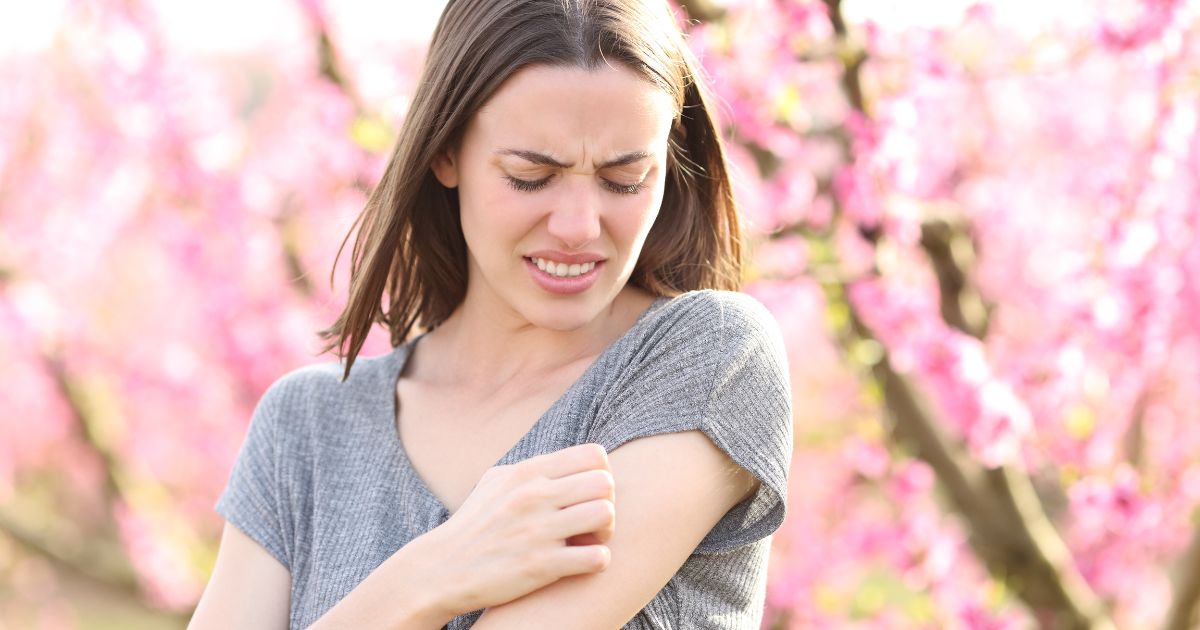Allergies in June can be troublesome. Not only do we have pollen, but allergies also occur due to insects and, with higher humidity, molds. June is one of those months when every other person suffers from allergies. In this article, we'll look at the most common allergens in June, symptoms and ways to protect yourself from them.

What Are the Symptoms of Allergies?
Allergy symptoms can vary depending on the type of allergen and individual people. The most common allergy symptoms include sneezing, runny nose, itchy eyes, rashes, shortness of breath, or swelling. These symptoms can be uncomfortable and can negatively impact the quality of life.
TIP: You can learn here how to recognize an allergy.
Most Common Allergens in June
- Pollen: Pollen allergy, also known as hay fever, is one of the most common allergies in June. While trees are no longer in bloom in June, a variety of herbs and grasses are blooming. Pollen from various plants is released into the air and can trigger allergic reactions in sensitive individuals. Allergies may affect individuals sensitive to lucerne, ribleaf, oxeye daisy, amaranth, nettle, timothy grass, meadow-grass and rye.
TIP: How to fight pollen allergy in spring - Insect Bites: June is also a period when more insects are flying around, including insects that can cause allergic reactions. Some people may be allergic to bee venom, wasp venom, or other allergens present in insect bites. Insect bites can cause redness, itching, swelling, shortness of breath, or fainting.
- Molds: Humid and rainy weather this month can also lead to a higher incidence of molds. Molds can be allergens that cause various symptoms such as sneezing, itching, and shortness of breath.
- Dust Mites: Unfortunately, dust mites live with us all year round. How do you recognize it? It most commonly manifests as nighttime coughing and a stuffy nose, improving during the day. Read more about dust mite allergy.
TIP: How to get rid of molds at home, read HERE.

How to Protect Yourself from Allergies in June
There are several ways to protect yourself from allergies in June and minimize their impact on your daily life.
- Monitor Pollen Forecasts: Monitoring pollen forecasts will let you know when pollen is most concentrated in the air. This allows you to plan your activities to minimize contact with pollen when it's at its highest concentration.
- Create a Safe Environment at Home: Use air purifiers at home or in your car if you have mold issues, try dehumidifiers to help reduce dust mites, and molds. Learn how to get rid of molds at home.When going outside, use a personal air purifier, mask, or scarf.
- Avoid Contact with Allergens: If possible, avoid contact with allergens that trigger your allergic reactions. When it comes to pollen allergy, avoid walks in nature during the day when pollen concentration is highest. Regarding mold allergy, try to maintain a dry environment and minimize humidity in the house.
TIP: Pollen calendar
Learn More About Allergies:
- How to Recognize Allergies
- Dust Mite Allergies
- Feather Allergies
- Dust Allergies
- Allergy to Cats
- Allergy to Dogs
- Spring Pollen Allergies
- Identifying and Managing Allergies in Infants and Children
- Combined or Cross-Reactive Allergies
- How to Prepare for Allergy Season
Frequently Asked Questions
Can allergies occur for the first time in June?
Yes, allergies can first occur at any time, including June. Many people first notice allergic symptoms such as itchy eyes, sneezing, or rashes during June when pollen allergen concentrations are higher. It's possible for an individual to become allergic to a specific allergen that is prominently present in the air at that time, triggering an allergic reaction.
How long do allergies last?
Allergies in June can last for varying durations in different individuals. Generally, allergy symptoms can persist for several weeks to months, depending on the allergen and individual sensitivity.
What are the most common allergens in June?
The most common allergens in June are pollen from grasses, trees, and weeds. These allergens are present in the air and can cause various allergic reactions such as runny nose, itchy eyes, and sneezing.
How to protect against insect bites?
To prevent insect bites and allergic reactions, you can take the following measures:
- Use insect repellents containing active ingredients such as DEET or IR3535.
- Wear long sleeves and pants when in areas with high insect activity.
- Use mosquito nets on windows and doors and insect screens.
- Avoid wearing perfumes or scented cosmetics that may attract insects.
- Be cautious when eating and drinking outdoors to avoid attracting insects to your food.
- When in nature, carefully inspect the surroundings for the presence of insects, especially wasps or bees, and avoid them.
How can insect bite allergies be recognized?
Allergies to insect bites typically manifest as intense itching, swelling, and redness at the site of the bite. Some people may also experience allergic reactions such as skin rash, shortness of breath, or even anaphylactic shock.
Is it possible to completely cure allergies?
Allergies cannot be permanently cured, but they can be managed, and symptoms can be alleviated. Allergy treatment focuses on minimizing symptoms and improving the quality of life for allergy sufferers.
Can allergies affect daily life?
Yes, allergies can affect the daily life of allergy sufferers. Symptoms such as sneezing, itchy eyes, or a stuffy nose can be uncomfortable and limit normal activities. Therefore, it is important to find ways to minimize the impact of allergies on daily life and seek appropriate treatment.
Sources
- Pylový kalendář. Pyly.cz [online]. In: https://www.pyly.cz/pylovy-kalendar/

